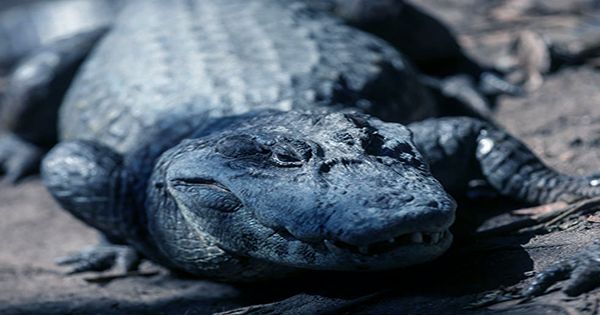Oklahoma’s oligarchs made a clever move in their intervention when a cold snap spread across the southern U.S. states last month. As cold-blooded reptiles, they may not like icy conditions; they prefer the sun on the banks of the river and the baskets on the shores of the lake.
However, in this case, they have embraced the idea of having toothsome popsicles to survive for a while. In February, “snorkeling” explorers spotted on an icy lake in the Red Slave Wildlife Management Area of McCartney County, Oklahoma, and this intriguing sight surprised locals. Wildlife shelter officials run by the Oklahoma Department of Wildlife Conservation, the U.S. Forest Service, and the Natural Resources Conservation Service have assured people that this is quite normal behavior – and a clever survival strategy.
At this time of year in America, alligators are in a process of despair – similar to hibernation, but where they aware. Because they are cold-blooded, they cannot control their own body temperature, so they depend on the temperature around them. To deal with the cold, they slow down their metabolism, ‘let the gators rest and go without food for months. However, if it is very cold, they may die.
Some alligators will continue to tremble as the wounds and aging decrease, but there is a risk of the lake freezing and the alligators trapped. So instead, some can swim on the surface and the surface freezes to ensure an uninterrupted supply of oxygen, blocking their flow. They can stay that way in their snoots for hours to days. The ice does not break due to the formation of cartilage in the snails of the alligators to make their air holes, meaning it will not damaged by exposure to icy air.
The alligator has identified using this survival strategy in North Carolina as well, as the freezing conditions in Oklahoma are common after hitting 0°C (32°F) for about three months of the year. They may survive in icy water for a while, but this is not ideal.
Although alligators are tough – they have not changed much in millions of years – not all people seen in the Red Slaughter Wildlife Management Area survived, according to Live Science. Although it thought that most adults would survive, some of them died young, probably because their body temperature could not protect them from drowning. Now that the temperature has backed up in Oklahoma, these alligator popsicles are no longer likely to be but it is an interesting glimpse into animal adaptation and survival while surviving.















